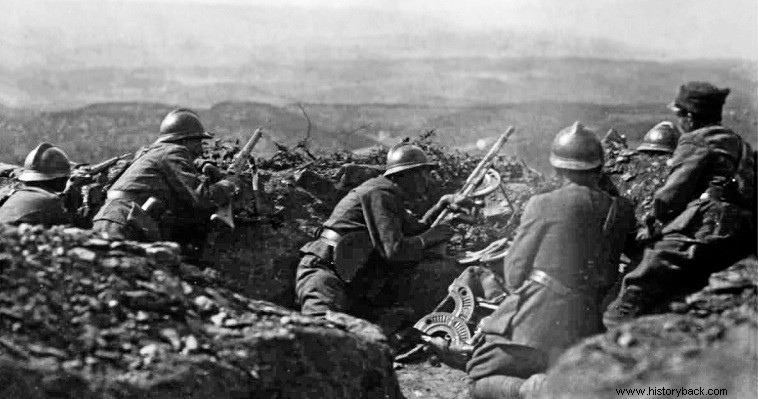
At the end of June 1919, the Kydonia Division (MK) undertook the clearing of the Demirtzi area in the center of the Greek front in Asia Minor. Greek forces had already over-extended from the northern Asia Minor coast to the Italian zone of occupation.
MK cleared the area by 15 July and began withdrawing its units. However, information about the concentration of strong Turkish forces in the area led the division to establish its battalion in Demirci.
On July 18, a Turkish force of 2,400 men, reinforced with three cannons, attacked the Greek battalion which, after fighting alone for hours, was forced to retreat to Borla having suffered very heavy losses - 47 dead, 93 wounded, 37 "disappeared". /strong> The following day the commander of the MK Alexandros Othonaios went to Borla and after being informed requested the withdrawal of the division from the uncovered advanced positions.
However, the administration had a different opinion and after reinforcing the MK with a detachment of the 2nd Infantry Division (MP), the 9th Cretan Regiment, artillery and cavalry ulama, ordered it to proceed with the clearing of the Demirtzi - Simav area.
The detachment of the II MP of three battalions and an artillery ulama advanced towards Kula, while the MK, in three phalanxes, moved towards Demirtzi. On July 22, the MK central phalanx clashed with a Turkish force which it overthrew and entered Demirci. The colonel – at the time – Othonaios was also injured in the conflict. In the meantime, the detachment of II MP clashed with Turkish units on its way and instead of moving towards Demirtzi, it remained 10 km south of the village.
The Turks did not fight for Demirci, retreating inland to Simav. In the meantime, confusion prevailed in the Greek administration. The General Staff (GS) ordered the liquidation of the entire Simav – Usak – Bulandan area. But the First Army Corps (SS), misunderstanding the order, mobilized its forces to occupy the area.
In the meantime, the MK was ordered to advance towards Simav, while the I MP of the 1st SS, which had started towards Usak, was recalled after the clarification by the General Assembly. The misunderstanding between the GS and the 1st SS resulted in the Greek soldiers moving up and down aimlessly, but with difficulty.
On July 24th, the MK led by its new commander colonel Gargalidis, had, as had been ordered, to march from Demirtzi to Simav and Jenikioi. But its commander requested a postponement from the First SS in order to form the same opinion. In the meantime, the 9th Cretan Regiment attached to his division had occupied Jenikioi...
On July 28, the General Assembly again ordered the MK to attack towards the Simav plateau. But the division asked for a new postponement to procure galette for its divisions... Nevertheless, on August 1st, the MK moved on its own initiative towards the peak of Simav Dag, which it descended with its mixed detachment against a Turkish force of approximately 1,000 men.
A little later, however, the summit was abandoned as the sections could not be resupplied and MK after leaving a regiment reinforced with artillery at Demirci, retreated to Salihli. On August 7, strong Turkish forces attacked the MK detachment in Demirci.
The Greek units repelled the attack with a spear counterattack. This was repeated the next day until the Turks were persuaded to retreat... The Greek losses were small. The Turks had at least 150 dead. However, what is important in this operation is the Greek incoherence, the confusion between the SS and the First SS, the backbiting...
And since much is still being said, it should be noted that even then all the senior officers were Venizelians and not "defunct" Constantinians.
